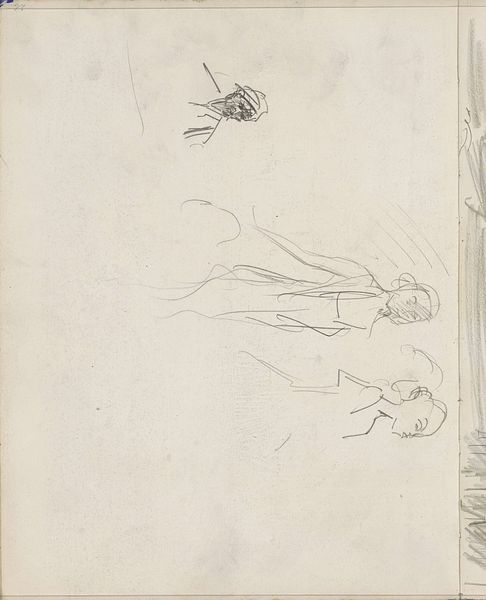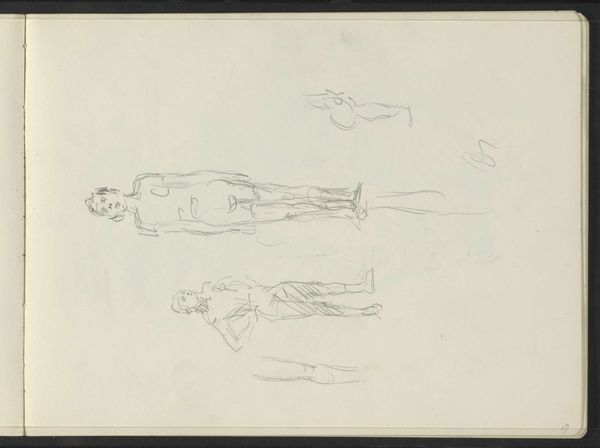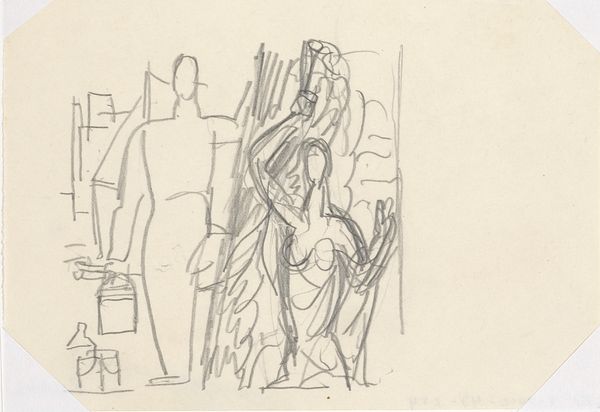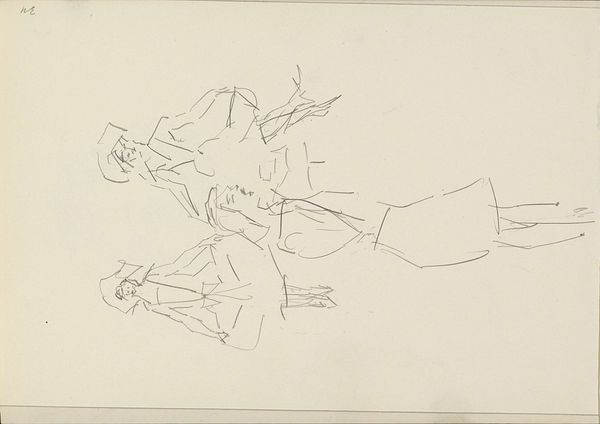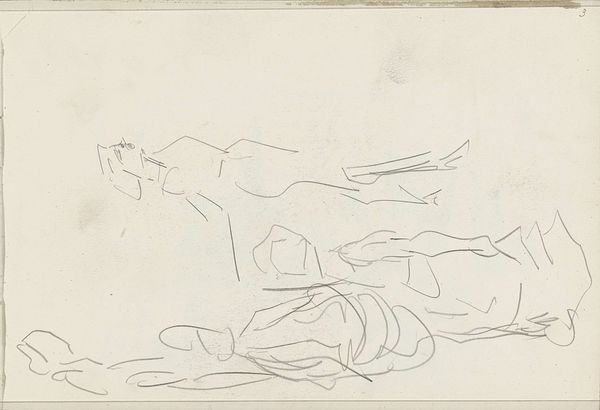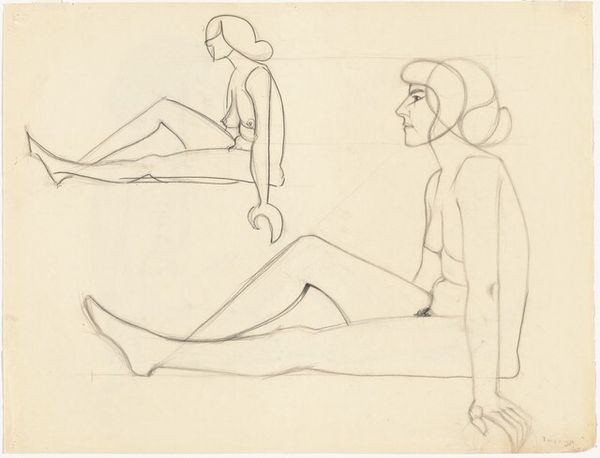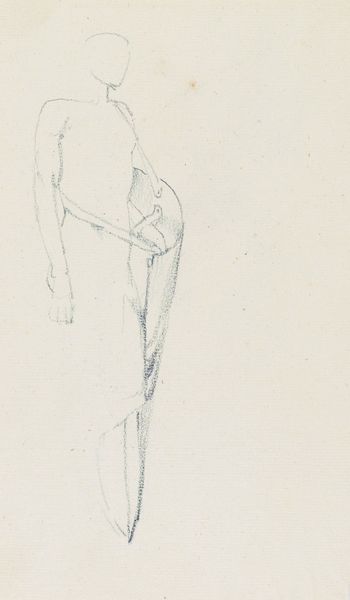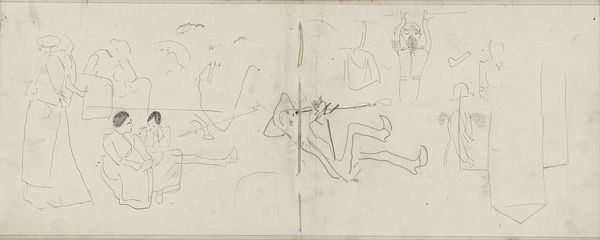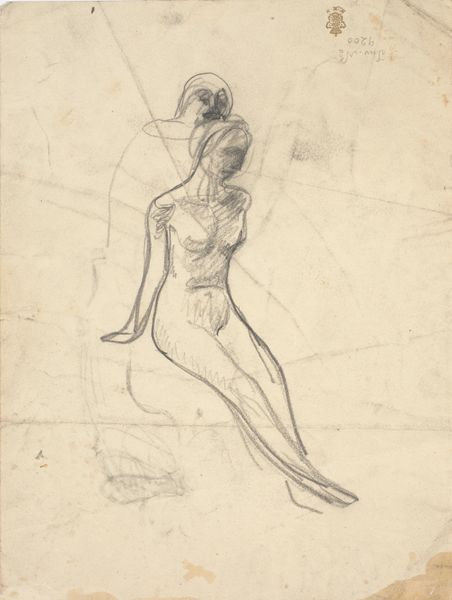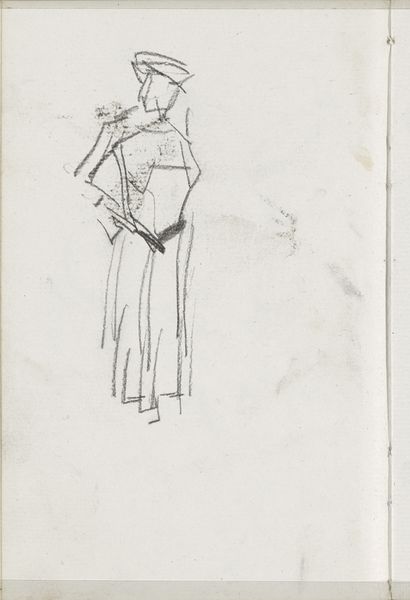
drawing, paper, ink
#
portrait
#
drawing
#
figuration
#
paper
#
abstract
#
ink
#
sketchwork
#
expressionism
#
line
#
modernism
Copyright: Public Domain: Artvee
Editor: Here we have Paul Klee’s “Angebot,” created in 1912 using ink on paper. It strikes me as both whimsical and vaguely unsettling, like a distorted memory. What's your read on this piece? Curator: What interests me is the very materiality of its production. Ink on paper seems simple, but Klee's quick, almost frantic lines suggest a process driven by impulse, a direct response to some social pressure. "Angebot"—meaning "offer" or "proposal"—hints at a market dynamic, perhaps even the commodification of the body itself. Editor: Commodification, interesting. So, you see these figures as representations of social exchange, perhaps even exploitation, rather than simply abstract forms? Curator: Precisely! Look at the exaggerated gestures, the bird-like heads, almost as if they're puppets on display. What is being offered here, and at what cost? The sketch-like quality undermines any illusion of idealized beauty, revealing the raw, material conditions of labor and social performance. It challenges the established art market. Editor: It's fascinating how the materials themselves can be read as commentary. I had initially focused on the composition and style as expressionistic and abstracted. Curator: And it IS expressionistic, absolutely, but Klee's choice to depict this 'offer' using such crude and inexpensive materials speaks volumes about the value - or lack thereof - that society places on what's being traded. Do you think Klee is reflecting the transition toward art as a commodity itself? Editor: Definitely. It brings a whole new dimension to the artwork beyond just aesthetic appreciation. Thank you for sharing this view. Curator: Likewise, your perspective reminded me of how Klee played with form in very original and unprecedented ways!
Comments
No comments
Be the first to comment and join the conversation on the ultimate creative platform.
